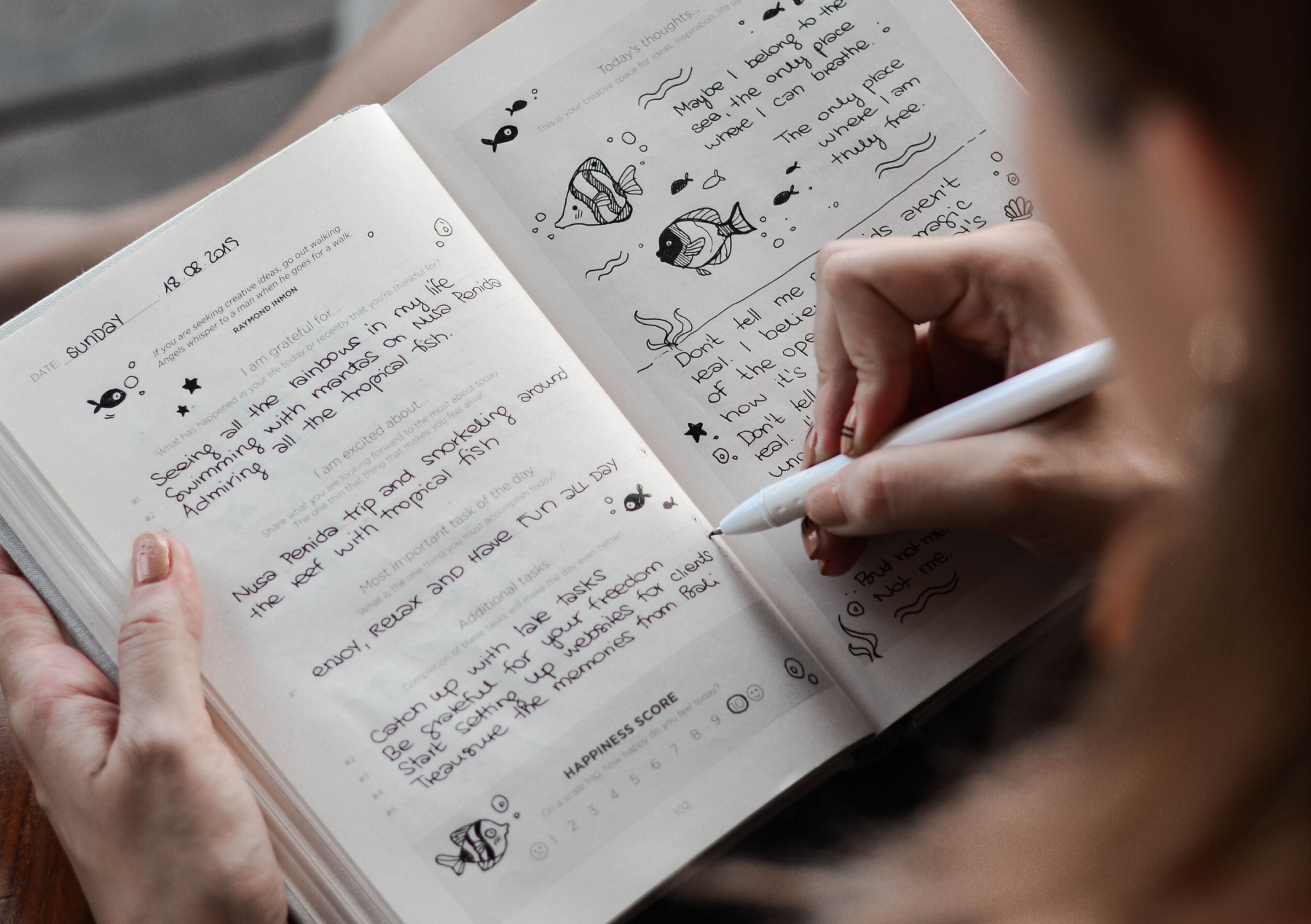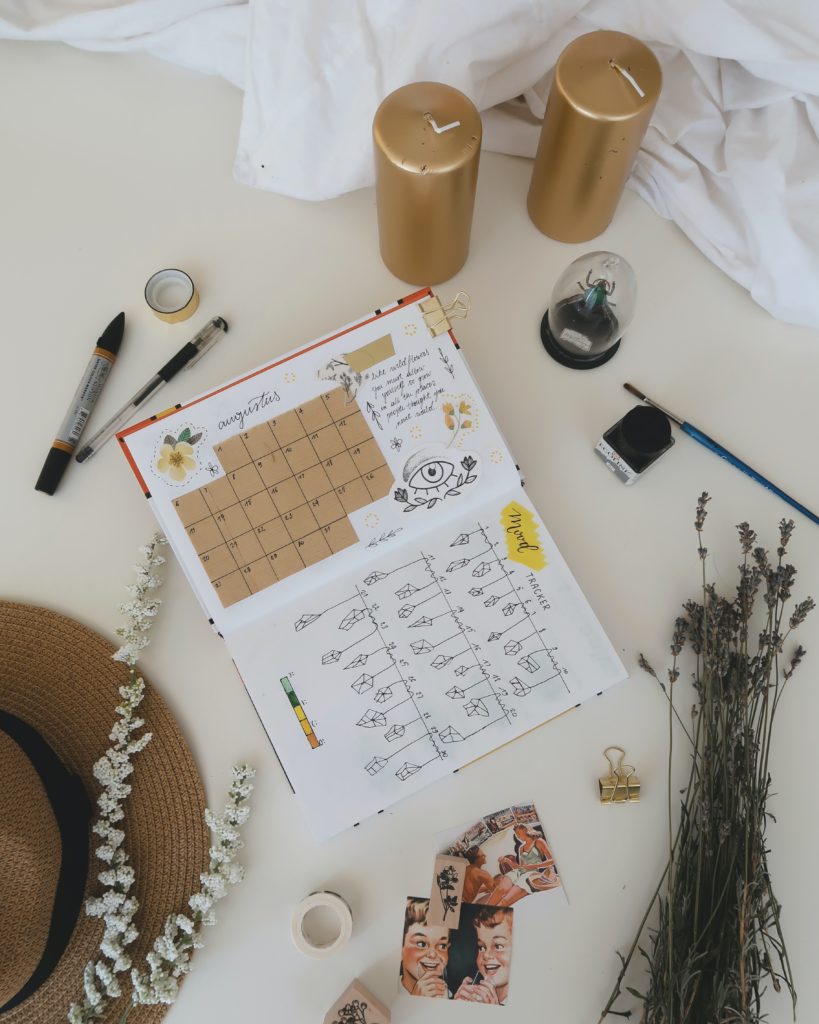The Benefits of Journaling, Types of Journals, and Where to Start

Journaling is about the process of writing down words, in order to understand and process them more clearly. These words can include thoughts, feelings, goals, tasks, whatever it may be. Now, journaling may not be for everyone. Some may feel that they clearly understand themselves and have no reason to explore any further. However, many do find that deciding to keep a daily journal has improved their life in several ways. It’s already scientifically proven that writing on paper alone has mental benefits, so let’s take a look at why exactly journaling is good for you, and how you can go about getting started.
Writing on paper
First, it’s important to know that writing on paper activates different parts of your brain than typing. In research comparing the two methods, it has been shown that writing on paper activates parts of the brain that correlate with working memory and encoding new information. A 2020 study on the matter showed that, “participants who drew the word showed increased brain activation in the parietal (important in processing language and attention) and occipital (important in visual processing) areas of the brain compared to participants who described the word.” Thus, writing on paper is not only better for long and short-term memory, but also comprehending and understanding information in a deeper way.

Journaling can help us stay balanced
While the effects of journaling can strongly impact our emotional and mental well-being, we should review the many additional aspects that it can improve:
- Tracking progress: When you journal daily, or at least regularly, you’re creating a map of your progress. Being able to look back and revisit thoughts, goals, and feelings on paper is a great way to compare where you are at a given moment to any moment previously recorded in the journal.
- Goal achievement: Track your goals by stating them in the journal with purpose. When you write down your intentions, you hold yourself accountable. Seeing your goals laid out also gives you a visual way of deciding what goals and tasks take priority over the others.

- Improved physical health: A number of scientific studies have concluded that journaling can actually improve physical health. In one study, it was found that longer-term health outcomes of expressive journaling included improved immune function, reduced blood pressure, improved liver function, and improved lung function.
- Reducing stress and anxiety: Reducing stress and anxiety isn’t always about getting rid of your stressors. Often, simply addressing them and writing about them can help ease some of the emotion and tension that you are feeling. It can also help you actually see patterns and identify stressors that you may have not been aware of prior.
Tips for getting started
Just start writing. It may seem awkward, or you may simply not know what to write about, but the key is to begin, even with just a scribble, and take it from there.
Stay consistent. Start by setting a time aside each day to write, even if it’s just 10 minutes. The point is to keep it consistent, and eventually it will become a habit rather than a task. You can keep your journal in a place that works best for you to keep up with it, like your living room or even your car if you’re always on the move.

Don’t censor yourself. While this may also take a little time to get used to, it’s important to write honestly and openly when journaling. This is how one comes to find out more about their thoughts and emotions, as well as a way to truly release them. A tip for reaching this level of comfortability is to keep your journal in a safe place where you trust others not to read it. If circumstances don’t allow this, using a journal with a lock or even a password protected journal online could be helpful (although handwriting is the suggested method for those who are able to).
There’s no right way to journal. Don’t worry about how the design might look to others. Don’t focus too hard on the grammar and sentence structure. All in all, remember that this is for you.
Common types of journaling styles:
Bullet journaling
Bullet journaling is a creative way of keeping track of things like mood, goals, schedule, and more. It’s like a combination of a daily planner, a diary, and even a way of meditating. The “bullet” comes in when the writer creates a code system. Different types of symbols and shapes will signal different actions, like having a task that is in progress or directing the writer to skip to a certain page in order to recall a memory. While it sounds complicated; it isn’t.
The beauty of the bullet journal is that the possibilities are endless, and the visual outcome truly reflects the mind of the writer. The downside to this style of journaling is that it is a bit time consuming. Setting up a habit tracking system, creating each weekly spread, etc. are things that one needs to set time aside to complete. Overall, this method of journaling is a great way of staying organized, while also expressing creativity and practicing mindfulness.

Classic Journaling/Freewriting
Classic journaling is a method where the writer typically writes in paragraphs that encompass their stream of consciousness. This is a great freewriting method where the pages can include anything from recaps of the day, feelings, poems, drawings, and more. Many people who journal in this style will pick up their journal whenever they feel compelled to write and release, but the lack of structure may cause it to be less effective for some who are prone to fall off the habit.
Vision journaling
Vision journals are goal-based journals. The idea is to have one goal per page or entry. There goal can be anything from a business idea, to a project, idea, etc. From there, one can add words, images, pictures, and more. It’s a similar idea to that of a vision board, where these add-on items can help the writer become inspired and map out ways to achieve this goal.
There are plenty of other journaling styles. When trying to decide which one is best for you, consider:
- Why you are journaling
- What you want to get out of journaling
- How much time you can commit
- What about your style of choice works for you and what doesn’t
Creating your own journal
There are tons of methods for creating your own journal from scratch. Lia Griffith provides an easy DIY journal tutorial that uses a Japanese binding method here. One way to get creative with the cover of your book and even enhance your spreads in a bullet journal is to use kraft cardstock. Remember that the creative possibilities are endless, so try to make something you’ll enjoy using each day!
Learning about the benefits of journaling and what you expect from it are great first steps in the process. These tips will guide you in the right direction for starting a successful and rewarding journaling journey.
To learn more about the benefits of journaling and how to get started check out these resources.
Baike, K. and Wilhelm, K. (2018) Emotional and physical health benefits of expressive writing. Cambridge University Press. https://www.cambridge.org/core/journals/advances-in-psychiatric-treatment/article/emotional-and-physical-health-benefits-of-expressive-writing/ED2976A61F5DE56B46F07A1CE9EA9F9F
Gulotta, N. (2017). 5 Very Effective Journaling Methods You Should Give a Try. Positive Writer. http://positivewriter.com/journaling-methods/
Griffith, L. (2016) Handmade Journal and Book Binding Tutorial. Lia Griffith. https://liagriffith.com/handmade-journal-crafts/
Ose Askvik E, van der Weel FR and van der Meer ALH (2020) The Importance of Cursive Handwriting Over Typewriting for Learning in the Classroom: A High-Density EEG Study of 12-Year-Old Children and Young Adults. Front. Psychol. https://www.frontiersin.org/articles/10.3389/fpsyg.2020.01810/full
Follow us @printworksdiy on social media for more craft inspiration, and visit our Store to check out the rest of our product line.


